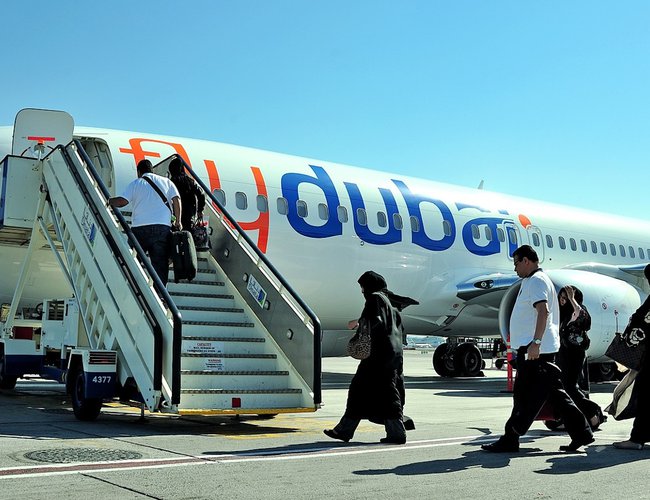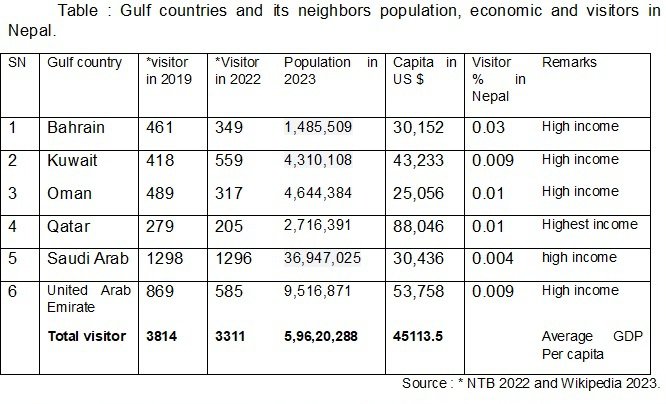
Nepal is popularly known as the country of Mt. Everest and the birthplace of Lord Buddha. Every year, a large number of visitors flow into Nepal from around the world. On June 3, 1950, French mountaineer Maurice Herzog and his team successfully scaled the 8,000-meter Mt. Annapurna I, marking a historic event for mountaineers. This achievement greatly inspired other mountaineers worldwide to attempt climbing the remaining 8,000-meter mountains in Nepal. Many mountaineers made attempts, and some successfully completed their ascents. Following this event, a series of attempts on the 8,000-meter mountains (10) of Nepal were made and successfully scaled by mountaineers in the 1950s. These events significantly promoted Nepal's mountaineering tourism and, on the other hand, fostered other forms of tourism. Over the last seven decades, Nepal's continuous efforts in tourism development have established it as a destination for nature, culture, and adventure tourism worldwide.
On the other hand, around the globe, the tourism business is dramatically increasing with modern technology and services. Simultaneously, Nepal is increasing such facilities or services, mainly transportation, accommodation, travel trade, dissemination of information, using IT technology, and other services for tourists in Nepal. These services are increasing throughout the country through government plans and programs. In addition, the private sector has been aggressively promoting ecotourism in Nepal. So far, their efforts are continuous with the collaboration of government plans.
Nepal is a popular destination for mountaineering and adventure tourism. It is gradually evolving into other forms of tourism, mainly nature-based recreational tourism such as ecotourism, trekking, hiking, sightseeing, mountain biking, bird watching, wildlife safaris, and cultural tourism. European and American tourists are particularly interested in visiting Nepal for adventure tourism, especially mountaineering and ecotourism, as well as sightseeing, recreation, leisure, and more. Additionally, Nepal is a major pilgrimage destination. Many Hindu and Buddhist followers also visit Nepal as pilgrimage tourists. Throughout its long history, Nepal has been a significant destination for Hindu followers, especially from India. Every year, thousands of Indian tourists visit places like Pashupatinath, Muktinath, Janaki Temple, Chatara, Devghat, Tribeni Ghat, and many other Hindu shrines on various occasions. In addition to Hindu followers, there is a large number of visitors from Eastern Asian countries, such as Japan, Thailand, China, Cambodia, Vietnam, Myanmar, Bhutan, Sri Lanka, and others, who follow Buddhism and visit Nepal for pilgrimage purposes.
They have been visiting Nepal to see the birthplace of Buddha, which is one of the dreams or goals of their life. In comparison, the number of Christian pilgrimage tourists is also low, but they come to Nepal to work in service sectors such as education, health, and other social services. However, there is a very small Muslim community in Nepal, and almost no Muslim pilgrimage tourist destinations, with very few visitors compared to other regions of the world.
The Muslim community is collectively known as the Arab League in the world. In other words, the Arab world is composed of 22 countries, with 12 in Asia and 10 in East Africa in the Arab League. The population in the Arab League is approximately 456 million according to the World Bank report 2021. Arab League countries have strong economic activities that are higher than other countries in the world. Exporting petroleum products and natural gas is the main pillar for their economic development.
The International Monetary Fund report for 2022 showed that Arab League member countries have a strong economy, with a GDP per capita higher than the global average. The average GDP per capita is $7,722.73 per year, which is more than half (approximately 58%) of the world average GDP per capita in 2022. Arab countries have significant potential for outbound tourism. Nepal is a popular tourist destination for many Arab countries, but the number of Arab tourists visiting Nepal is lower compared to countries like the USA, UK, Canada, Japan, France, Australia, and others. Additionally, Gulf countries in the Arab world have higher incomes compared to other Arab countries. However, the number of visitors to Nepal from these countries is lower than expected. When comparing their populations, economies, and visitors to Nepal, there are noticeable disparities.
This article focuses on a glimpse of tourism in Gulf countries. In the Gulf, only six countries are included: Bahrain, Kuwait, Oman, Qatar, Saudi Arabia, and the United Arab Emirates. These Gulf countries have a higher per capita income than the global average economy and a higher human development index as well. The population is approximately 6 million. However, their travel trend to Nepal is very poor, with less than 0.01% visiting. This trend is also reflected in other countries in the Arab League.
Table: Population, Economy, and Visitors in Gulf Countries and Their Neighbors

What are the major obstacles that reduce the flow of Arabian visitors to Nepal despite their good financial status?
Authorities in the Gulf view modernity as achievements in economy, technology, and education, while socio-political involvement is seen as problematic. In detail, the position of women from the eight Gulf States – Bahrain, Iran, Iraq, Kuwait, Oman, Qatar, Saudi Arabia, and the United Arab Emirates – lags far behind other countries that are economically on par with them. So far, only six women from these countries have climbed Everest from the Nepal side despite the wealth they have from oil and natural gas.
According to Sangam Prasain, Business Editor of the Kathmandu Post Daily, only six women from Arabian countries, mainly 2 from Iran, 2 from Saudi Arabia, one from Oman, and one from Bahrain, have climbed Everest from the Nepal side in the last two decades.
Bahraini Prince Mohammed successfully scaled Mt. Everest on May 11, 2021. Now, Qatari woman Sheikh Asma Al Thani is planning to climb Mt. Everest next season, as announced in a notice. According to the notice, the climbing plan is set for September 20, 2023. These mountaineering events should inspire Muslim women to engage in mountaineering tourism within their community. Such events will raise awareness about Nepalese tourism and help promote Nepalese tourism in the Arabian world.
While some Nepalese travel agencies promote mountaineering tourism, their main market focus is not on Arabian countries. It seems they mainly serve as ground handling agencies for foreign tour operators. There is a need for tour operating agencies from the Arab world to establish a presence in Nepal.
Mani Ram Lamichhane, Director of the Nepal Tourism Board, stated that Arabian tourists are high-quality and luxury travelers. Nepal currently lacks the capacity to meet the needs and expectations of Arabian tourists. They prefer to travel to European and American cities, spending more money on luxurious travel experiences and enjoying modern developments and luxurious lifestyles. These types of products and services are not readily available in Nepal, which is why there is a lack of attraction for Arabian tourists. In order to attract more Arabian tourists, Nepal needs to develop tourism products specifically tailored to their preferences. Despite the fact that there are more flights from Arabian countries to Nepal compared to Eastern Asian countries, only a few Arabian tourists, especially foreigners working in Arabian countries, choose Nepal as their holiday destination. For example, there are 28 flights per week from Doha to Kathmandu operated by Qatar Airways, as well as multiple flights per week by Turkish Airlines, Fly Dubai, Air Arabia, Kuwait Airways, Jazeera Airlines, Salam Air, Emirates, Nepal Airlines, Himalaya Airlines, Air Arabia Abu Dhabi, Etihad Airways, and many more airlines from Arabian countries. Despite the high number of flights originating from Arabian countries, there is a low number of Arabian tourists arriving in Nepal on these flights. On a daily basis, Tribhuvan International Airport receives a minimum of 16 flights from Arabian countries, but the number of tourists arriving in Nepal from these flights is significantly low. The question remains: why are Arabian tourists not choosing Nepal as a travel destination despite the availability of flights and sufficient infrastructure?
Vice President of Nepal Tourism Board Chandra Prasad Rijal said the Nepal Tourism Board has no plan or program to attract Arabian tourists. Gradually, Arabian tourists are being observed in the Nepalese tourism market.
Senior journalist Khim Ghale, Editor for Highlight Tourism, said Arabian tourists are less common in the Nepalese tourism market. There may be many reasons behind this, and a detailed study is needed to explore the causes of this lack of interest and to improve Arabian tourism in Nepal.
During informal interactions with tourism experts and operators, some major points were identified. These include language and cultural barriers, a lack of tourism products in Nepal, poor understanding of the Arabian world, diverse geography and climate, and a poor tourism marketing strategy for the Arabian world.
In contrast to other tourism experts, Mr. Laxman Gautam, Research Division Chief at the Nepal Tourism Board, has a different understanding. He stated that Arabian tourists pay close attention to travel safety from both manual and natural hazards. Flight and road accidents in Nepal might be a cause of their lack of interest in Nepalese tourism. Additionally, food hygiene is important to them, and they prefer to eat traditional halal food, which is not commonly available in the Nepalese market, leading to their disinterest in visiting Nepal.
Gautam also points out that thousands of Nepalese citizens are working in the Gulf, including Arabian League countries, which has created psychological barriers for them to visit Nepal. Nepalese are a working-class community, and it may not be their preferred travel destination. Nepal is seen as the hometown of workers, and they may develop a negative attitude towards visiting. They may think that everyone in Nepal is like the workers in Arabian countries, so why should they visit a poor country like Nepal?
Tourism expert (IOF/Pokhara) Prof. Shreekanta Khatibada has a different experience than others. He mentioned that Arabian culture is more closed off compared to others, and they often travel with family members, including women and children. Male travelers prefer casinos, while female travelers prefer shopping, which are tourism products available in countries like Malaysia and Thailand. Therefore, every year, more than a million Arabians visit these countries. Saudi Arabia alone sends over 1 million visitors to Thailand, followed by visitors from UAE, Oman, and Kuwait. Additionally, their food culture is also similar. Religion and culture play a vital role in tourism. Besides, Nepal lacks Muslim culture and historical monuments to attract Arabian tourists.
Some tourism experts have said that language and cultural barriers might be one of the causes that distract Arabian tourists from visiting Nepal. Based on informal interactions and information received, many travel agency operators and tourism experts have mentioned that food hygiene and cultural food, mainly halal food, are their concerns. Language may not be a barrier because the education level of the Arabian community is higher than in other countries. However, food and other daily customs are unfamiliar to them, which could be a major constraint for Arabian visitors in Nepal. Therefore, we concluded that language and cultural practices are major barriers for Arabian tourists in Nepal. The number of Arabian language speakers in Nepal is very low, and they are unfamiliar with the culture and food habits. Additionally, their culture, especially the use of burkas (face cover shields) by women, is not conducive to trekking tourism. The Muslim society strictly follows traditional norms and values, with high moral and social punishments for non-compliance.
In terms of tourism products or destinations, Nepal is a mountainous country famous for adventure tourism, especially mountaineering. However, the Arabian community has less knowledge and interest in adventure tourism, which may be a reason for Arabian tourists to be deterred from visiting Nepal as a tourist destination. Tour operators have mentioned that they have difficulty convincing them about Nepal's tourism products. From what I know, Arabian tourists prefer to travel to highly developed countries like those in Europe and America.
Diverse geography and climate: Arabian countries are mostly desert, with a plain landscape of sand and dunes. They experience high temperatures, low rainfall, and are surrounded by seas, shaping their daily lifestyle. In comparison, Nepal has diverse geography, ranging from lowlands to the highest peaks in the world, and experiences rainy to cold seasons. Nepal is a mountainous country, with over 83% of its landscape covered by mountains, including the Chure range, Mahabharat, and the lesser to higher Himalayas. The climatic and geographical diversity in Nepal has led to biodiversity and cultural diversity. The climate influences people's lifestyles, such as their clothing and food habits. Drinking Tibetan tea is a popular cultural practice in the Himalayan region, as it helps prevent dehydration in the high altitudes. In contrast, in the plains, this type of dress and tea have no significance.
Weak tourism marketing to attract Arabian tourists: The Arab world is famous for its oil-producing countries. The Arabian community is smaller in number compared to other communities, but they hold a high position among the world's wealthier communities. Nepalese travel agents lack knowledge and skills, are not focused on marketing, and have a weak understanding of Arabian culture and economy. There may be many other reasons why Nepalese travel agencies have a weak marketing strategy for Arabian countries. It is the right time to promote Nepalese tourism products to Arabian countries through appropriate business strategies.
Potential tourism activities in Nepal: Tourism activities focused on Arabian communities are lacking in Nepal. Some potential tourism activities include ecotourism, such as wildlife safaris in national parks, wildlife watching, bird watching, paragliding, bungee jumping, rafting, rock climbing, honey hunting, sightseeing in mountain regions, cultural tours, homestays, heli-tours in high mountains, and many more. These are other potential tourism activities in Nepal for Arabian tourists.
The Ministry of Culture, Tourism, and Civil Aviation's records in 2021 showed that the number of Arabian tourists visiting Nepal is not significant. The Nepal Tourism Board is responsible for promoting international tourism marketing in Nepal. However, there have been no specific programs for promoting tourism to Arabian tourists. In recent years, the number of Arabian tourists visiting Nepal has been low, and promoting mountaineering can help to promote other forms of tourism in Nepal.
The Arab world is one of the potential markets for Nepalese tourism promotion. Their economy's growth size and the huge number of outbound citizens in the country have proven that there is a huge tourism market. Based on Arabian culture and their interests, Nepal has to develop tourist destinations and marketing strategies to achieve the tourist numbers in the tourism decades declared by the government of Nepal.
Finally, joint cooperation of private and public partnerships is essential for the promotion of ecotourism in Nepal. First of all, we have to clear all obstacles mentioned above and develop an appropriate marketing strategy. Mountaineering will be an appropriate entry point in this region, which has already started. The only way to improve Arabian tourism in Nepal is to win the Arabian community's trust that Nepal is a safe, appropriate, and attractive diverse destination for ecotourism. Then, Arabian community ecotourism will flourish in Nepal.
Gurung is a member of the International Ecotourism Society Eurasian Chapter, Turkey
.















